If you have questions for an auto accident lawyer about bad weather, you may find some answers here.
Any auto accident lawyer has seen his or her fair share of weather-related cases. Rain, snow, ice, and fog are some of the most common weather conditions that contribute to auto accidents. We’ve put together some helpful tips to assist you in driving safely in severe weather based on common occurrences we’ve seen as auto accident lawyers.
Snow or Ice
Slow down. When roads get slippery, limit your speed to about ten miles per hour below the speed limit. If you find it difficult to control your vehicle, reduce your speed by three to five miles per hour until you have control. Regardless of the speed limit, never drive faster than you’re comfortable.
Watch for black ice. It’s nearly impossible to see this treacherous ice. Watch for it when your headlights reflect off the road at night. Black ice is especially common on bridges, shadows, and intersections.
Turn into a skid. If you do encounter black ice or other slippery conditions, you may find your vehicle in a skid. If this happens, it’s important to stay calm, take your foot off the brake and the gas pedals; turn the steering wheel in the direction the car is skidding. Although it may feel counterintuitive, this cancels out the skid, allowing the car to correct itself.
Leave plenty of space. Every auto accident lawyer will say you can’t be too careful on slick roads. If you’re traveling on the interstate, leave about 100 yards between your vehicle and the car ahead of you to give you plenty of room to stop in case that person brakes suddenly.
Don’t brake while turning. It’s easy to spin out when negotiating curves in icy conditions. Gradually begin turning the steering wheel and feathering the brakes lightly before the curve, then coast through the curve with your foot off the gas and brake.
Fog
Use fog lights. Fog lights are yellow, and they easily cut through fog. They’re also lower to the ground, so the beams illuminate the road well. If your car doesn’t have fog lights, use low beams instead of high beams.
Tap your brakes before entering thick fog. When you see thick banks of fog ahead, tap your brakes to alert followers and to reduce the space between your vehicles.
Use caution on hills. Reduce your speed, and move to the right when approaching hills to provide yourself space and time to react if a car is stopped over the crest.
Rain Advice from an Auto Accident Lawyer
Slow down. As any auto accident lawyer knows, we see many cases every year involving hydroplaning. At high speeds, your tires can lose traction with wet roads, lifting your vehicle off the ground on a layer of water. In this event, slow down until you regain control of the car.
Never drive through flooded areas. It’s difficult to determine how deep water levels can be. Currents can be deceptively strong in heavy rain and can sweep away your vehicle with surprising ease. Additionally, if water gets sucked into the air-intake valve and engine, your car may stall.
In the event that you experience a collision during severe weather, a reputable auto accident lawyer can represent your rights and ensure that you’re protected. Call Tolbert Beadle with questions or any additional information.





